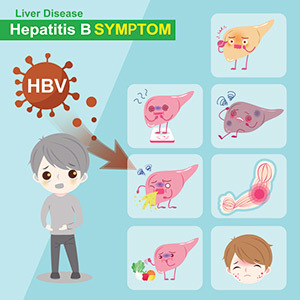
Hepatitis C: Advances in Treatment for the Viral Infection
In recent years, the fight against Hepatitis C has been revolutionized by remarkable improvements in treatment options. Hepatitis C, a viral infection that can lead to serious liver damage if left untreated, was once a condition with limited treatment success and significant side effects. Today, however, advances in medical science have led to the development of antiviral drugs that offer a cure rate of over 90%, transforming the prognosis for individuals diagnosed with this once daunting disease. This evolution in treatment not only offers hope to those affected but also highlights the power of medical innovation and the ongoing commitment to eradicating viral infections.
Hepatitis C, a viral infection that targets the liver, can range from a mild illness lasting a few weeks to a serious, lifelong condition leading to chronic liver disease. Over the years, the approach to treating Hepatitis C has evolved significantly, moving away from less effective and more side-effect-prone therapies to highly effective direct-acting antiviral (DAA) medications. Understanding the nature of the Hepatitis C virus (HCV) and the latest treatment options is crucial for those affected and for public health in general.
Understanding Hepatitis C Virus (HCV)
The Hepatitis C virus is primarily transmitted through blood-to-blood contact. Before the widespread screening of blood products, transfusions were a common transmission route. Today, it's more commonly spread through sharing needles or other equipment to inject drugs. HCV can cause both acute and chronic infections. Chronic Hepatitis C can lead to serious health issues like liver cirrhosis, liver cancer, and liver failure over time.
Breakthrough in Hepatitis C Treatment
The treatment landscape for Hepatitis C has been revolutionized with the introduction of direct-acting antivirals (DAAs), which directly target the mechanisms the Hepatitis C virus uses to replicate in liver cells. These drugs have transformed Hepatitis C from a potentially life-threatening condition to a curable disease for most people.
- Direct-Acting Antivirals (DAAs): DAAs work by interfering with specific steps in the HCV lifecycle, stopping the virus from making copies of itself. These medications are taken as oral tablets, usually for a course of 8 to 12 weeks. The choice of DAA and the length of treatment depend on the HCV genotype, the presence of liver damage (cirrhosis), and whether the patient has been treated for Hepatitis C before.
- Effectiveness and Cure Rates: The DAAs have shown cure rates exceeding 90%, with many patients achieving a sustained virological response (SVR), which is considered a cure. Achieving SVR significantly reduces the risk of liver cancer and cirrhosis.
- Side Effects: Unlike the previous treatments that involved interferon and caused numerous side effects, DAAs have a much more tolerable side-effect profile. The most common side effects are mild and include headaches and fatigue.
The Importance of Screening and Treatment
Early detection through screening is vital since chronic Hepatitis C often shows no symptoms until significant liver damage has occurred. High-risk individuals, including those who have injected drugs, received blood transfusions or organ transplants before July 1992, or have HIV, should be screened for HCV.
Treating and clearing the virus not only benefits the individual by preventing liver-related health issues but also reduces the risk of HCV transmission to others. With the availability of DAAs, the goal of eliminating Hepatitis C as a public health threat has become attainable.
Future Directions in Hepatitis C Management and Research
Looking forward, the focus in Hepatitis C management and research is shifting towards total eradication of the virus. Innovations in drug development aimed at overcoming resistance to current treatments and addressing the remaining challenges for those with complex health scenarios. On the public health front, strategies are being reinforced to improve HCV screening rates, especially among populations that may not have ready access to health services. Furthermore, there's a continuous effort to reduce the cost of DAAs to improve access and adherence to treatment worldwide. Efforts are also being made to educate and increase awareness about Hepatitis C, its transmission, and prevention - crucial steps to lower new infection rates and guide public policy effectively.
Conclusion
The advancements in Hepatitis C treatment with direct-acting antivirals represent a significant milestone in medical science, offering hope and healing to millions affected by the virus. These developments underscore the importance of screening, early diagnosis, and treatment. For those living with Hepatitis C, consulting a healthcare provider for the most appropriate and effective treatment plan is a critical step toward recovery and maintaining liver health.
